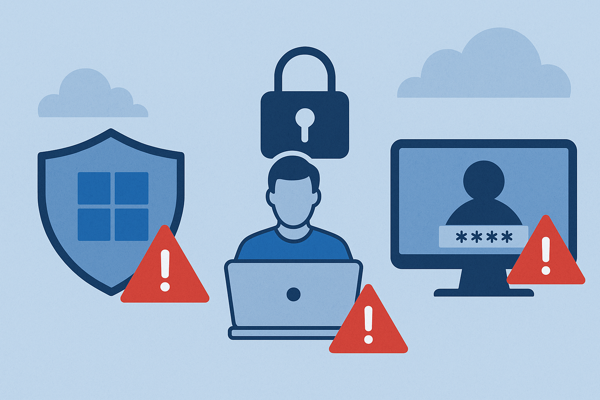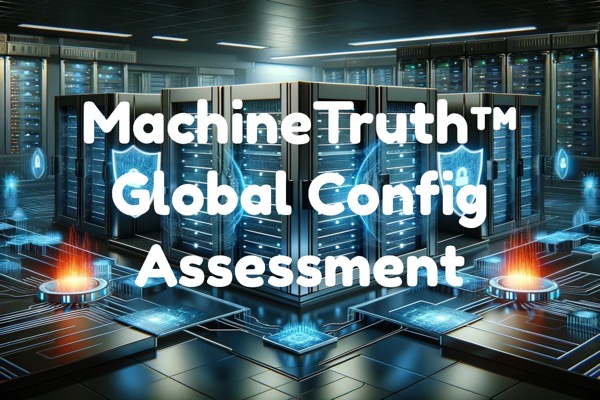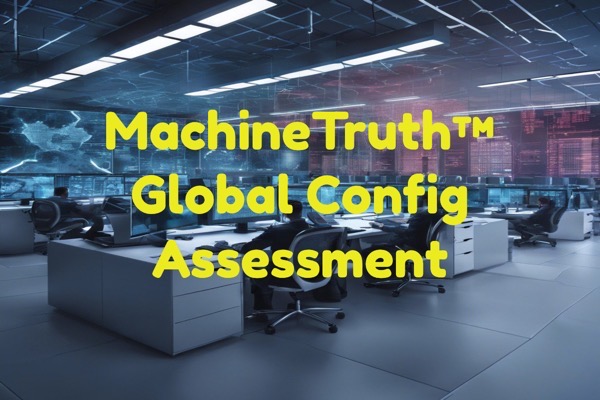Securing cloud services like Microsoft 365 is more crucial than ever. With millions of businesses relying on Microsoft 365 to manage their data and communication, the implementation of robust security measures is essential to protect sensitive information and maintain operational integrity. Unfortunately, many companies still fall victim to common security pitfalls that leave them vulnerable to cyber threats.

One prevalent issue is the neglect of multi-factor authentication (MFA), which provides an added layer of security by requiring more than one form of verification before granting access. Additionally, companies often fail to adhere to the principle of least privilege, inadvertently granting excessive permissions that heighten the risk of unauthorized access. Another frequent oversight is the improper configuration of conditional access policies, which can lead to security gaps that exploiters might capitalize on.
This article will delve into these three critical mistakes, exploring the potential consequences and offering strategies for mitigating associated risks. By understanding and addressing these vulnerabilities, organizations can significantly enhance their Microsoft 365 security posture, safeguarding their assets and ensuring business continuity.
Understanding the Importance of Microsoft 365 Security
Microsoft 365 (M365) comes with robust security features, but common mistakes can still lead to vulnerabilities. Here are three mistakes companies often make:
- Over-Provisioned Admin Access: Too many admin roles can increase the risk of unauthorized access. Always use role-based access controls to limit administrative access.
- Misconfigured Permissions in SharePoint Online: Incorrect settings can allow unauthorized data access. Regularly review permissions to ensure sensitive data is protected.
- Data Loss Prevention (DLP) Mismanagement: Poor DLP settings can expose sensitive data. Configure DLP policies to handle data properly and prevent leaks.
Training staff on security policies and recognizing attacks, like phishing, is crucial. Phishing attacks on Office 365 accounts pose a significant risk, making training essential to reduce potential threats. Use Multi-Factor Authentication (MFA) and Conditional Access policies for an extra layer of protection.
|
Common Mistakes |
Potential Risks |
|---|---|
|
Over-Provisioned Admin Access |
Unauthorized access |
|
Misconfigured SharePoint Permissions |
Unauthorized data access |
|
DLP Mismanagement |
Sensitive data exposure |
By focusing on these areas, businesses can enhance their M365 security posture and protect against security breaches.
Mistake 1: Ignoring Multi-Factor Authentication (MFA)
Multi-Factor Authentication (MFA) is a key security feature in Microsoft 365. It needs extra verification steps beyond just a username and password. Despite its importance, MFA is not automatically turned on for Azure Active Directory Global Administrators. These administrators have the highest privileges. Ignoring MFA is a common mistake that can lead to unauthorized access. Attackers can easily exploit stolen credentials without this crucial layer of protection.
Here’s why MFA matters:
- Extra Security: It adds a second layer of protection, making hacking harder.
- Prevent Unauthorized Access: Attackers struggle to bypass these checks.
- Recommended Practice: Even the US government strongly advises using MFA for admin accounts.
To enhance security, organizations should use Conditional Access policies. These policies can require all users to employ phishing-resistant MFA methods across Office 365 resources. This strategy ensures a more secure environment. Avoiding MFA is a security risk you can’t afford. Never underestimate the role of MFA in safeguarding against potential threats.
Mistake 2: Overlooking the Principle of Least Privilege
In Microsoft 365 (M365), a common mistake is neglecting the Principle of Least Privilege. This approach limits users’ access to only what they need for their roles. Here are key points about this mistake:
- Global Admin Roles: It’s crucial to review all accounts with global admin roles. Without regular checks, the security risks rise significantly.
- Third-Party Tools: Many organizations don’t fully apply this principle without third-party tools like CoreView. These tools help implement and manage least privilege effectively.
- Misunderstandings on Admin Capabilities: Many misunderstandings exist about what admins can and cannot do in M365. This can worsen security oversights if least privilege isn’t enforced.
By overlooking this principle, organizations expose themselves to potential threats and unauthorized access. With clear role-based access controls and regular reviews, the risk of security breaches can be minimized. Incorporating the Principle of Least Privilege is a vital security measure to protect your M365 environment from security challenges and incidents.
|
Potential Issues |
Security Impact |
|---|---|
|
Excess Admin Access |
Unauthorized Access |
|
Misunderstood Roles |
Security Breaches |
Mistake 3: Misconfiguring Conditional Access Policies
Conditional access policies are crucial for protecting your organization. They control who can access resources, based on roles, locations, and device states. However, misconfiguring these policies can lead to security breaches.
One major risk is allowing unauthorized access from unmanaged devices. If policies are not set up correctly, sensitive data could be exposed. Even strong security measures like Multi-Factor Authentication can be undermined.
Here is how misconfiguration can happen:
- Lack of Planning: Without a solid plan, policies can be applied inconsistently. This makes it easy for threats to exploit vulnerabilities.
- Complexity Issues: Managing these policies can be complex. Without proper understanding, settings might not account for all risks.
- Insufficient Risk Assessment: Failing to adjust access controls based on user or sign-in risk leaves gaps in security.
To ensure safety, create a clear framework before configuring policies. Regularly review and update them to handle potential threats. Think beyond just Multi-Factor Authentication and use conditional access settings to strengthen security controls.
This layered approach adds protection against unauthorized access, reducing the risk of security incidents.
Consequences of Security Oversights
Misconfigured security settings in Microsoft 365 can expose organizations to serious threats such as breaches, data leaks, and compliance violations. Failing to tailor the platform’s advanced security features to the organization’s unique needs can leave gaps in protection. Over-provisioned admin access is another common mistake. This practice can increase security risks by granting excessive privileges, leading to potential unauthorized data access.
Weak conditional access policies and poor data loss prevention (DLP) management further amplify security vulnerabilities. These issues can result in unauthorized access and data exposure, which are compounded by the failure to monitor suspicious sign-in activities. Not regulating registered applications within Microsoft 365 also heightens the risk of undetected malicious actions and unauthorized application use.
Allowing anonymous link creation and guest user invitations for SharePoint sites can lead to unintended external access to sensitive information. Below is a list of key security oversights and their consequences:
- Misconfigured security settings: Breaches, data leaks, compliance issues.
- Over-provisioned admin access: Unauthorized data access.
- Weak conditional access and DLP: Unauthorized access and exposure.
- Lack of monitoring: Undetected malicious activity.
- Anonymous links and guest invites: Unintended information exposure.
By addressing these oversights, organizations can bolster their defense against potential threats.
Strategies for Mitigating Security Risks
Ensuring robust security in Microsoft 365 requires several strategic measures. Firstly, implement tailored access controls. Using Multi-Factor Authentication and Conditional Access reduces unauthorized access, especially by managing trust levels and responsibilities.
Second, conduct regular backup and restore tests. This minimizes damage from successful cybersecurity attacks that bypass preventive measures. It’s important to maintain data integrity and ensure quick recovery.
Third, utilize sensitivity labels across documents and emails. By automating protection settings like encryption and data loss prevention, you can prevent unauthorized sharing and misuse of sensitive information.
Additionally, actively track user and admin activities. Many overlook this, but monitoring specific threat indicators is key for identifying potential threats and security breaches in your environment.
Use advanced email security features like Microsoft Defender. This helps protect against malware, phishing, and other frequent cyber threats targeting Microsoft 365 users.
Here’s a simple checklist:
- Implement Multi-Factor Authentication
- Conduct regular backup tests
- Use sensitivity labels
- Monitor activities regularly
- Enable advanced email protection
By integrating these strategies, you strengthen your security posture and mitigate various security challenges within Microsoft 365.
Importance of Regular Security Assessments
Regular security assessments in Microsoft 365 are vital for identifying and mitigating insider threats. These assessments give visibility into network activities and help control risky behavior. Automation is key, too. Using tools like Microsoft Endpoint Manager can streamline patch deployment, enhancing security posture.
Key Steps for Security:
- Automate Updates:
-
- Use Microsoft Endpoint Manager.
- Streamline patch deployment.
- Review Inactive Sites:
-
- Regularly clean up OneDrive and SharePoint.
- Maintain a secure environment.
- Adjust Alert Policies:
-
- Monitor changes in inbox rules.
- Prevent unauthorized access.
- Limit Portal Access:
-
- Use role-based access controls.
- Secure Entra portal from non-admin users.
Regular reviews and cleanups ensure a secure Microsoft 365 environment. Adjusting alert policies can monitor changes made by unauthorized access and prevent security breaches. Limiting access based on roles prevents non-admin users from affecting security and functionality. These measures safeguard against potential threats and help maintain security and functionality in Office 365.
Training and Building Security Awareness
User adoption and training are often overlooked in Microsoft 365 security. However, they play a crucial role in educating users about appropriate usage and common attack methods. While technical controls are essential, they cannot replace the importance of user training on specific security policies.
Here are three reasons why training and awareness are vital:
- Minimize Security Risks: Companies should invest in training to ensure users understand and follow the right security protocols. This reduces the chance of security incidents.
- Enhance Security Posture: Effective training fosters a culture of security awareness. This can significantly boost a company’s overall security measures.
- Adapt to Threats: Regular training keeps users informed about evolving cyber threats and the latest practices. This helps in maintaining updated security controls.
A simple table can highlight training benefits:
|
Benefit |
Outcome |
|---|---|
|
Reduced unauthorized access |
Fewer security breaches |
|
Informed admin center actions |
Better role-based access control |
|
Awareness of suspicious activities |
Quicker incident response |
By investing in training programs, companies can build a layer of protection against potential threats. Regular sessions help keep employees aware and ready to handle security challenges.
Leveraging Emergency Access Accounts
Emergency access accounts are crucial for maintaining administrative access during lockouts caused by conditional access policies. However, having these accounts is not enough. They must be secured with robust measures, such as physical security keys.
To strengthen security, it’s important to exclude emergency access accounts from all policies except one. This policy should mandate strong authentication methods like FIDO2. Regular checks with scripts can help ensure these accounts remain included in the necessary conditional access policies.
Here’s a simple guideline for managing emergency access accounts:
- Implement Strong Authentication: Use methods like FIDO2.
- Secure Accounts with Physical Keys: Enhance security with physical keys.
- Regular Script Checks: Ensure accounts are in the right policies.
- Maintain a Dedicated Policy: Keep a specific policy for these accounts.
|
Security Measure |
Purpose |
|---|---|
|
Strong Authentication (e.g., FIDO2) |
Ensures secure account access |
|
Physical Security Keys |
Provides an additional layer of protection |
|
Regular Script Checks |
Confirms policy inclusion of all accounts |
|
Dedicated Policy for Emergency Accounts |
Offers focused control and management |
By following these strategies, organizations can effectively leverage emergency access accounts and reduce security risks.
Conclusion: Enhancing Microsoft 365 Security
Enhancing Microsoft 365 Security requires strategic planning and active management. While Microsoft 365 offers integrated security features like malware protection and email encryption, merely relying on these defaults can expose your business to risks. Implementing Multi-Factor Authentication (MFA) is essential, offering an additional layer of protection for both users and administrators.
To boost your security posture, use tools like Microsoft Secure Score. This framework helps in identifying potential security improvements, although it may require significant manual input to maximize effectiveness. Furthermore, robust access controls are necessary to combat insider threats. Continuously monitoring account activities, especially during employee transitions, is crucial.
Consider the following checklist to strengthen your Microsoft 365 security:
- Enable Multi-Factor Authentication.
- Regularly update security policies and Conditional Access policies.
- Use role-based access controls for admin roles.
- Monitor suspicious activities, especially on mobile devices.
- Actively manage guest access and external sharing.
By being proactive, you can protect against unauthorized access and security breaches. Engage with your security measures regularly to ensure you’re prepared against potential threats.
More Information and Help from MicroSolved, Inc.
MicroSolved, Inc. is your go-to partner for enhancing your security posture. With a focus on identifying and mitigating potential threats, we offer expertise in Multi-Factor Authentication, Conditional Access, and more.
Many organizations face security challenges due to human errors or misconfigured security controls. At MicroSolved, Inc., we emphasize the importance of implementing robust security measures such as Privileged Identity Management and role-based access controls. These enhance administrative access protection and guard against unauthorized access.
We also assist in crafting conditional access policies to protect your Office 365 environment. Monitoring suspicious activities and external sharing is vital to preventing security breaches.
Common Security Features We Implement:
- Multi-Factor Authentication
- Security Defaults
- Mobile Device Management
To enhance understanding, our experienced team offers training on using the admin center to manage user accounts and admin roles.
For more information or personalized assistance, contact us at info@microsolved.com. We are committed to helping you navigate security challenges and safeguard your digital assets efficiently.
* AI tools were used as a research assistant for this content, but human moderation and writing are also included. The included images are AI-generated.







